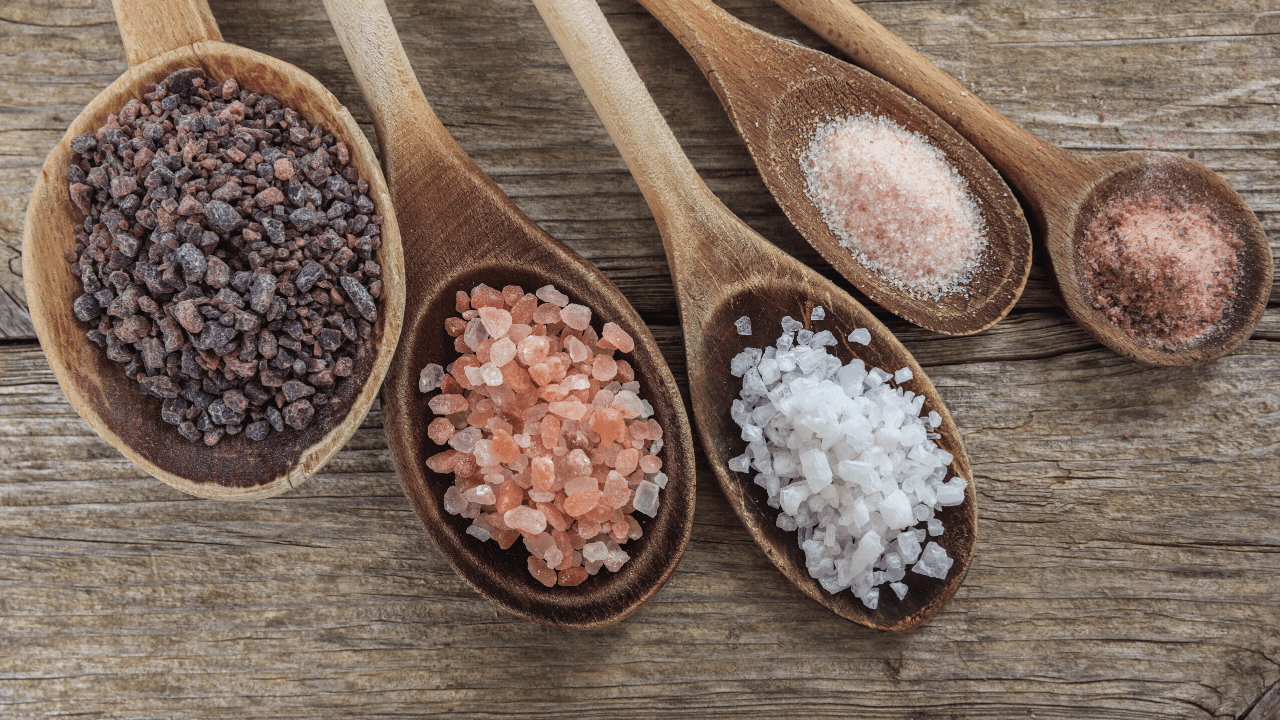What is salt?
Salt consists of a positively charged and a negatively charged ion. There are many types of salts. The salt that we commonly refer to in cooking is sodium (also known as Na on the periodic table). Edible salt consists of sodium chloride and is used as a seasoning to improve the palatability of foods and liquids as well as a preservative. The type of salt depends on the mineral mix and evaporation methods, and vary in texture, flavor and uses.
What are some of the effects of sodium on the body?
Sodium is essential for human health and found in bodily fluids like blood, sweat, tears, semen, and urine. Sodium is absorbed from the gastrointestinal tract and brings water with it. The body only requires a small amount of sodium. When dietary sodium intake is low, the body reduces sodium excretion (removal) in the urine and sweat to maintain a homeostasis. This requires elaborate signaling pathways between the kidneys, blood vessels and the brain. If any of these organs are malfunctioning, then sodium homeostasis can be disrupted and people can develop either dangerously low or high blood sodium levels.
What are the effects of excess sodium intake on the body?
Excess sodium intake is associated with high blood pressure and fluid retention (swelling). High blood pressure is one of the major risk factors for stroke and heart disease. Heart disease is the leading cause of death in America.
How much is too much sodium?
The Dietary Guidelines for Americans recommend limiting sodium to less than 2,300 milligrams a day which equates to about 1 tsp of salt. Most of our sodium intake comes from processed foods at the grocery store (soup, deli meat, canned goods, frozen TV dinners) as well as restaurants.
Types of salt:
Table Salt
- Found in most saltshakers
- Table salts are usually 97 to 99 percent sodium chloride, with some added anti-caking agents to prevent clumping
- Many include added iodide (essential nutrient that can be removed during purification process)
Sea salt
- Produced through evaporation of ocean water or water from saltwater lakes, usually with little processing
- Depending on the water source, contains certain trace minerals and elements
- Minerals add flavor and color to sea salt
- Despite being marketed as a “healthier” version of table salt, sea salt contains comparable amounts of sodium by weight
Kosher salt
- Refined salt with larger crystals than normal table salt
- No additives (like iodide)
- Despite its name, only some brands are actually certified as kosher
- Named “kosher” because it us used as a “koshering salt”, used in making meats kosher
Himalayan salt
- Known for its bright pink hue, the Himalayan version of this salt is mined in the Punjab region of Pakistan
- Pink color comes from trace amounts of iron oxide
- The salt is predominantly sodium chloride which is the same as table salt

Resources:
- Be Salt Smart: myplate.gov (ENGLISH): https://www.myplate.gov/tip-sheet/be-salt-smart
- Be Salt Smart: myplate.gov (SPANISH): https://www.myplate.gov/es/tip-sheet/use-la-sal-de-forma-inteligente
American Heart Association Infographics
- AHA: 7 Salty Myths: https://www.heart.org/-/media/AHA/H4GM/PDF-Files/7-Salty-Myths-Infographic-pdf.pdf
- AHA: Tips to consume less Sodium when Dining out: https://www.heart.org/-/media/AHA/H4GM/PDF-Files/75-Want-Less-Sodium.pdf
- AHA: Effects of Excess Sodium: https://www.heart.org/-/media/AHA/H4GM/PDF-Files/Excess-Sodium-infographic-English.pdf
- AHA: Sodium Swap: https://www.heart.org/-/media/AHA/H4GM/PDF-Files/ChangeSaltyWays_InfoG_Nov2014.pdf
American Heart Association Information
- AHA: Get the Scoop on Sodium and Salt: https://www.heart.org/en/healthy-living/healthy-eating/eat-smart/sodium/sodium-and-salt
- ‘Balance’ is the key word in new dietary guidance for heart health: https://www.heart.org/en/news/2021/11/02/balance-is-the-key-word-in-new-dietary-guidance-for-heart-health

